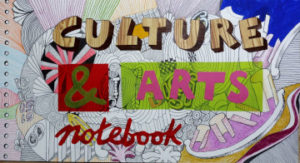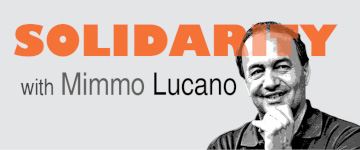Cuban rappers are a visible part of the resistance
This article was written anonymously by an author in Cuba, using the fake name “Luis Rodriguez”
Historically, the political system in Cuba has repressed any form of opposition, including legitimate proposals supported by constitutional values. But in 2021, Cuban society has the power of social media in its hands to resist repression from the Cuban state, in addition to anthems and other methods of protest.
This past April 4, members of the San Isidro Movement (MSI), Luis Manuel Otero Alcántara and Maykel Castillo, known as Osorbo, thwarted an attempted arrest by the police with the help of its community in the Havana neighborhood of San Isidro.
The activists and intellectuals of MSI express themselves principally through music and from the aesthetic codes of performance, including striptease acts. Based in Havana, its membership features Luis Manuel Otero Alcántara and Maykel Castillo, the independent journalist Carlos Manuel Álvarez, and the rapper Denis Solís, imprisoned in Cuba for an altercation with the police, among others. Nearly all members of MSI are black and mixed race, and since its birth in 2018, its leaders have been subject to arbitrary detention.
The day before the attempted arrest on April 4, the police paid a visit to San Isidro. Journalist Humberto López of the Cuban state television channel made a complaint against an event that would unfold on April 4 in the San Isidro neighborhood for an allegedly subversive purpose.
On that day, the community went to the streets to support the singers with their most recent song, Patria y Vida, also starring the group Gente de Zona, Descemer Bueno, and Yotuel, members of the group Orishas. The theme music was sung in chorus that historic Sunday: “It’s already over,” they sang. “You, ’59. Me, double two,” in lyrics that refer to the year of the Cuban Revolution (1959) and the recent protest movement (2020).
Meanwhile, another symbolic scene of resistance was in progress. Given the worsening of the economic situation during the pandemic with effects on vulnerable groups throughout the country, the leaders of the dissident organization Patriotic Union of Cuba (UNPACU) took the initiative to distribute food to people in the community of Altamira in Santiago de Cuba. In the face of the government’s actions, which included fencing off the headquarters to prevent its members from continuing with this practice, 27 of their activists started a hunger strike at the end of March. The conflict has awoken the interest of the international community, including the Organization of American States and the European Parliament. Cuban state media in turn has questioned the motives of the hunger strike and of the MSI movement overall. According to the Diario de Cuba, the UNPACU ended the strike on April 11 and began distributing food again.
The following day, on April 12, Luis Manuel Otero Alcántara was summoned by the police, Maykel Castillo was beaten, and other members of the community were detained, according to the MSI Instagram account.
The spirit of 27N continues
In what came to be known as 27N, the protests on November 27, 2020 were considered unprecedented in Cuban society and are comparable to the Maleconazo, a term used to refer to the antigovernment unrest that shook the Cuban nation in 1994 when Cuba experienced one of the worst economic crises in its history.
In November 2020, a group of nonconformist artists gathered in front of the Ministry of Culture to reclaim the right to freedom of creation and expression on the island, and reclaim the liberation of some of the incarcerated members of the San Isidro Movement (MSI). The night before, members of MSI were evicted from the headquarters of San Isidro, as their core members underwent a hunger strike demanding the freedom of Denis Solís.
This seemingly isolated event was the result of decades of artists and intellectuals being subjected to discontent and arbitrary actions. Eventually, they decided to peacefully confront Cuban power. Vice Minister of Culture Fernando Rojas has responded to the protests on Twitter by saying that he has invited the artists to engage in a dialogue, but they refused and caused trouble instead.
Many on and off the island have interpreted these protests as the prelude to a possible social outburst in Cuba, a signal to the government to speed up economic, political, and social changes called for by Cuban society, including the need to promote the existence of legitimate civil society. In Cuba, there does not exist, as it does in other countries, the freedom of association. The few NGOs that operate are controlled by the state, except those that operate in the Catholic sphere.
The Cuban intellectual expert on judicial topics, Julio César Guanche, explains this point of inflection in the history of the Cuban nation in the Chilean press:
“The current scene in Cuba expresses generational, social, and cultural change that Cuba has been experiencing for years… None of those who were at 27N in front of MINCULT [Ministry of Culture] were born that day into Cuban political life, nor were those that starred in the protests of the San Isidro Movement. [Its demands], it seems to me, cannot be reduced to only one position on the left or the right, and even less to the position of “revolutionaries against counterrevolutionaries.”
The unifying power of social media in the face of internet blocks
There is one factor that is vital to achieving this power to gather this number of artists with a sense of unity, when they are usually isolated and fragmented: New communication technologies and the power to mobilize on social media, above all through Facebook and WhatsApp. Since 2018, Cubans have had access to the internet on their cell phones.
For many, its use is so liberating that it can trigger mobilization in places where there is oppression, such as the case in Cuba, and where internet access acts as a mechanism for cohesion and enhanced leadership. Social media in Cuba could be contributing to the democratization of Cuban society and could empower the nascent civil society to weaken the historic monopoly that the state has exercised over the realms of information and culture, ideological pillars of all authoritarian states.
In response to the protests, there were internet blocks by the Cuban state and its company that monopolizes the sphere of communications, ETECSA. It happened after the protest in front of the Ministry of Culture in November 2020. On that historic night, ETECSA, by order of the government, revoked access to the internet and social media throughout the island without offering an explanation, in order to prevent the information from being transmitted to the world through international media. The members of the UNPACU headquarters in Santiago de Cuba have also suspended access to the internet on several occasions and have installed security cameras in front of the building. It has also deprived independent journalists of internet access. Oftentimes, someone with internet access manages to leak the information and it spreads like wildfire through cyberspace and the blogosphere.
Thanks to the use of private virtual networks (VPN), it is often possible to stay connected to social media. But with new legal attempts to control information constantly received by the Cuban people, the future is uncertain.












